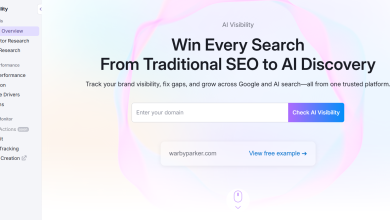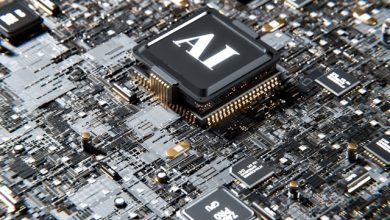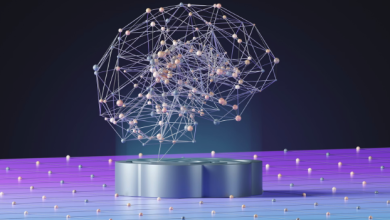
Let’s say a top performer unexpectedly resigns. In a usual scenario, the boss would be confused why this has happened and what could have been done differently. But now, this costly scenario, once accepted as inevitable, is not preventable, thanks to Artificial Intelligence.
AI-driven insights help HR teams customize retention strategies, improve job satisfaction, and proactively address team dynamics. They can use smart algorithms to come up with emerging patterns and solve talent challenges. AI can also help create environments where people want to stay.
Let’s explore how you can use AI to redefine employee retention strategies in modern workplaces. That will ultimately foster a culture where key talent chooses to stay and thrive. So we begin.
5 Best Ways to Use AI for Improving Employee Retention
Understand this: AI cannot replace human leadership. But there’s no denying that AI and ML are popular today. Leadership can use AI to augment managerial tasks and create a positive work environment. Let’s look at the most impactful strategies.
Predictive Analytics for Proactive Intervention
AI algorithms review data points that are anonymized and aggregated. These are email metadata, calendar usage, project completion rates, and engagement survey history. It can help pinpoint flight-risk employees (those who are likely to quit).
This way, managers can be proactive in addressing issues through personalized check-ins and offer support even before the employee is considering quitting.
What to Do?
- Integrate Data Sources: Merge data from HRIS, performance reviews, engagement surveys, and anonymized productivity tool data.
- Flag At-Risk Employees: Create a simple, private alert system for managers that uses AI algorithms. The alerts focus on those team members who are most likely to quit.
- Identify Key Drivers: Look into trends of resigning employees and determine the main factors driving turnover specific to your company.
- Enable Proactive Check-Ins: Give managers the information so they can have timely and need-based supportive discussions.
- Measure Intervention Success: Assess if proactive actions taken based on AI predictions positively impact at-risk employees.
Personalized Career Pathing and Development
Human resources information systems (HRIS) with AI algorithms can identify the unique combination of an employee’s skills, interests, and goals. Then they compare it with the opportunities available in the organization.
Consequently, human resource managers will be able to allocate specific projects, mentorship programs, micro-learning courses, and even lateral moves for employees.
AI-generated algorithms also help in organizing and outlining clear company growth paths for employees. It helps eliminate the lack of motivation.
What to Do?
- Map Internal Skills: AI technologies will be used to review and synthesize job descriptions and performance metrics. Develop a dynamic map of skills within the company.
- Recommend Internal Moves: Propose needs-based internal jobs, projects, or mentorship opportunities for an employee and tailored toward his/her skill set and career direction.
- Curate Learning Content: Suggest focused training, micro-learning, or reading materials. It can assist employees in working on their business-critical skills linked to the areas of their career development.
- Visualize Future Roles: Provide employees with AI-enhanced visualization tools. So they can explore potential career avenues inside the company suitable for their profile and aspirations.
- Identify Skill Gaps: Explore the set of skills needed for future roles. Provide customized detailed development plans to employees and managers to close those gaps.
Intelligence Assistants to Improve Employee Experience
Chatbots and AI assistants provide employees with instant, 24/7 answers to FAQs regarding benefits, PTO policies, and internal procedures. This reduces administrative friction and frees up HR to focus on more complex, human-centric tasks, improving overall satisfaction.
What to Do?
- Automate Inquiries: Implement AI chatbots to tackle HR inquiries 24/7 on matters such as benefits, PTO, policies, and payroll, and provide immediate responses.
- Reduce Friction: Use AI to automate tedious processes, including timesheet submission, expense report filing, and meeting scheduling.
- Provide Immediate Assistance: Establish secure communication to employees who inquire about confidential issues regarding mental health services or business policies.
- Assist With Onboarding: Develop a tailored onboarding assistant that issues information, business duties, and team introductions pertinent to the position for new employees.
- Gather Feedback Constantly: Employ conversational AI for swift and frequent heartbeat checks on morale and workload. That makes the provision of feedback more seamless and informal.
Analyzing Feedback at Scale
AI sentiment analysis tools can process thousands of responses from open-ended survey questions, exit interviews, and feedback platforms. This uncovers common themes and underlying causes of dissatisfaction—from workload stress to cultural issues. That might be missed in manual reviews, enabling targeted organizational changes.
This strategy is especially helpful when you’re trying to support remote employees and make work more engaging for them.
What to Do?
- Analyze Qualitative Data: Use sentiment analysis techniques on unstructured data like exit interview comments, open-ended questions in engagement surveys, and posts in employee forums to identify recurring themes.
- Spot Emerging Problems: Capture increasing negative feelings or repeated mentions of problems as they emerge. So action can be taken quickly and the problem does not grow.
- Divide Insights by Teams: Examine patterns in feedback by team, location, or department to detect issues affecting specific groups.
- Follow Sentiment Changes: Evaluate how employees feel towards particular topics. Like, work-life balance, react to the introduction of company initiatives or policies over time.
- Respond to Feedback: Leverage AI to group suggestions and direct them to the right department managers for their attention and action. That ensures the feedback is addressed.
Reducing Bias in Management and Promotion
AI can help identify high-potential talent across the organization by objectively analyzing performance data and skill contributions. That can help mitigate unconscious bias that can lead to the overlooking of valuable employees and their subsequent departure.
What to Do?
- Check Past Decisions: Look at promotion, pay raise, and hiring data from previous years to see if there’s any evidence of bias related to gender, ethnicity, or other identity markers.
- Clarify Performance Reviews: Implement AI tools that can identify inappropriate gendered or biased terms in performance reviews. Then provide suggestions for more neutral and objective language.
- Remove Identifying Details in Candidate Screening: When dealing with internal transfers, implement AI tools that remove identifying information from applications. Then rank candidates based only on skills and achievements to minimize affinity bias.
- Create Bias Notifications: Modify software tools to provide warnings when there are decisions (such as task assignments) that differ significantly from the baseline and might signal unconscious bias.
- Help Balance Opportunity in Projects: Check that AI tools are fair in selecting employees for important projects and chances to advance. Use the right skills as criteria rather than the employee’s manager’s connections.
The successful implementation of these tools hinges on transparency, employee consent, and rigorous data privacy protocols. AI should be used to empower and support employees, not to surveil them.
Conclusion
Incorporating AI in redefining employee retention strategies represents a significant choice for the HR professionals. It’s transformed from reactive to intelligent HR management. AI can take raw data and transform it into predictive insights and personalized actions. These tools give organizations the ability to tackle the causes of turnover before talent leaves the door.
That said, this technology is not a substitute for human judgment; rather, it is meant to complement it. Clarity can then be provided to help build an equitable, supportive, and engaging workplace.
But the crux of attrition should never be at the forefront; it should be its prevention. A culture should be developed where employees are truly seen, heard, and offered strong reasons to stay. For this, AI will assist.





